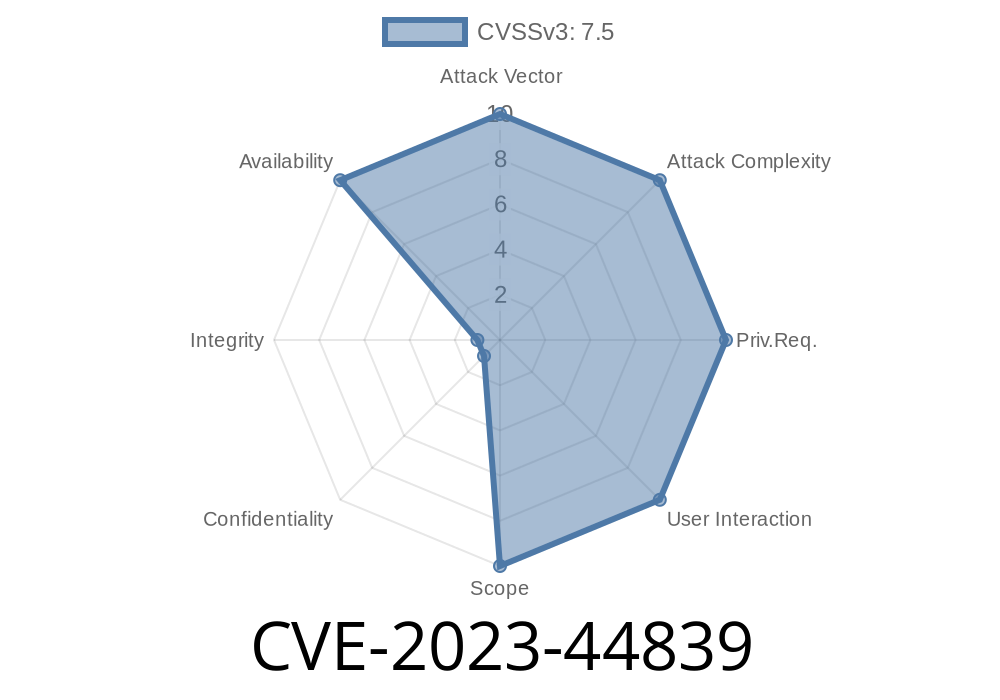A new vulnerability has been discovered in D-Link's DIR-823G A1V1..2B05 router, allowing attackers to exploit a buffer overflow vulnerability and cause a Denial of Service (DoS) condition. This security flaw has been assigned the identifier CVE-2023-44839 and exists in the router's SetWLanRadioSecurity function, specifically through the Encryption parameter.
In this post, we will provide a detailed description of the CVE-2023-44839 vulnerability, a code snippet demonstrating the issue, links to the original references, and some information on how the exploit can be executed.
Vulnerability Details
The vulnerability is caused by a lack of proper input validation, which makes it possible for an attacker to exploit a buffer overflow within the SetWLanRadioSecurity function. By sending a carefully crafted input to the vulnerable router, the attacker can trigger a buffer overflow within the Encryption parameter, leading to a Denial of Service (DoS) condition. This poses a significant risk for users of the affected router, as attackers can potentially cause disruptions or take down their networks.
Code Snippet
The following code snippet demonstrates the vulnerable SetWLanRadioSecurity function that accepts an Encryption parameter and processes it without proper input validation:
void SetWLanRadioSecurity(char* encryption)
{
char buf[64];
// ... (other unrelated code)
strncpy(buf, encryption, sizeof(buf));
// ... (rest of function code)
}
As seen in the code above, the strncpy function copies the contents of the encryption parameter into a buffer with a fixed size of 64 bytes. If an attacker sends an input that is larger than 64 bytes, the buffer will overflow, and a DoS condition may occur.
Original References
For detailed information about this vulnerability, as well as the official advisory, please refer to the following links:
1. CVE-2023-44839 Vulnerability Details
2. D-Link DIR-823G A1V1..2B05 Advisory
Exploit Details
In order to exploit this vulnerability, an attacker would need to craft a specific input designed to overflow the buffer within the SetWLanRadioSecurity function. This can be achieved by creating an overly long string, for example using the following Python code:
encryption_exploit = 'A' * 128
The attacker would then need to send this crafted input to the router as the Encryption parameter, potentially using a custom script or tool. Once the data is received by the router, the buffer overflow will occur, leading to the Denial of Service condition.
In conclusion, the CVE-2023-44839 vulnerability in D-Link DIR-823G A1V1..2B05 is a serious security issue that could cause disruption and downtime for users of the affected device. It is crucial for D-Link and other vendors to prioritize security by providing patches or updated firmware to address such vulnerabilities. As a best practice, users should keep their devices' firmware updated and be cautious when providing input to any network-connected device.
Timeline
Published on: 10/05/2023 16:15:12 UTC
Last modified on: 10/06/2023 14:59:00 UTC
